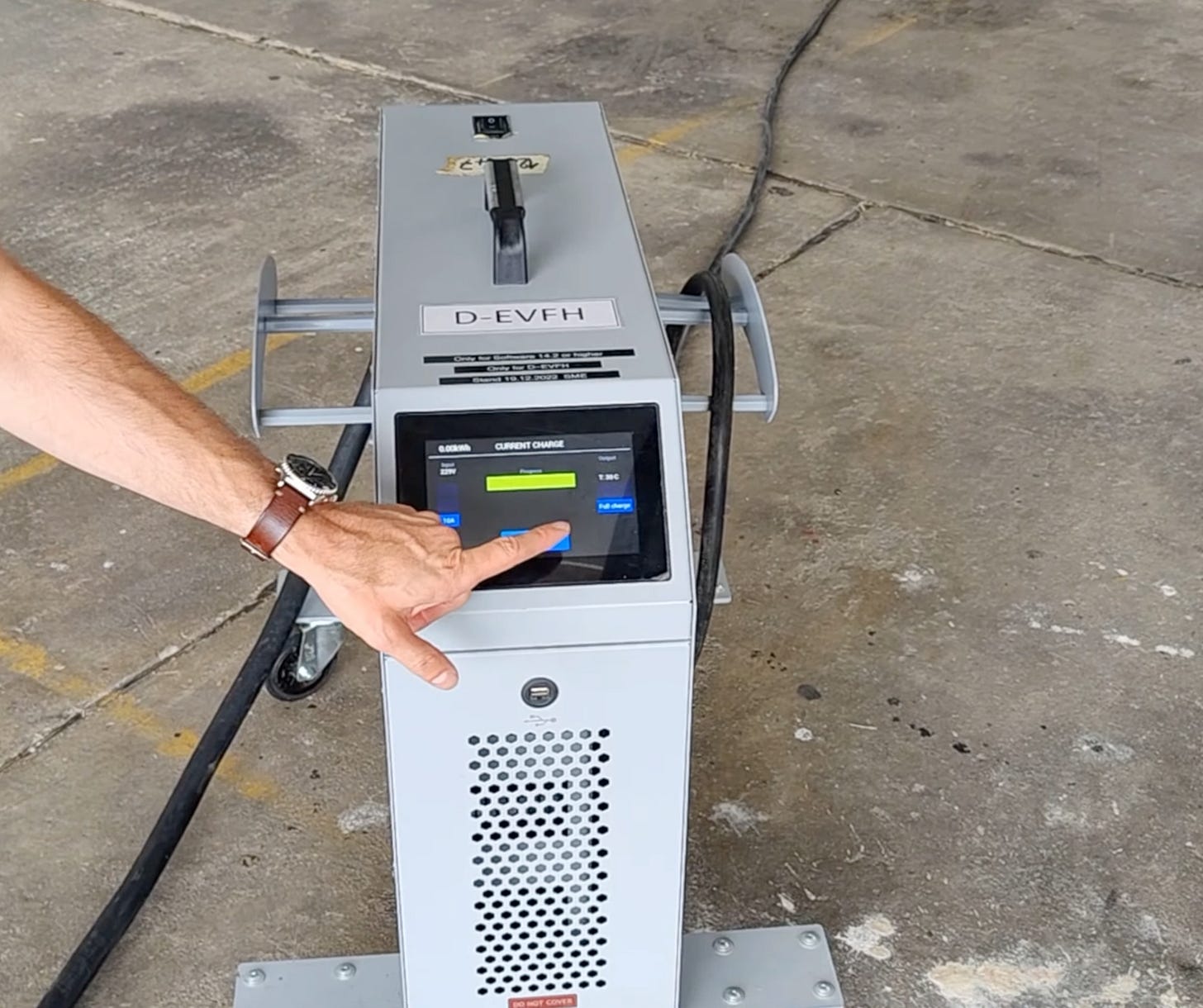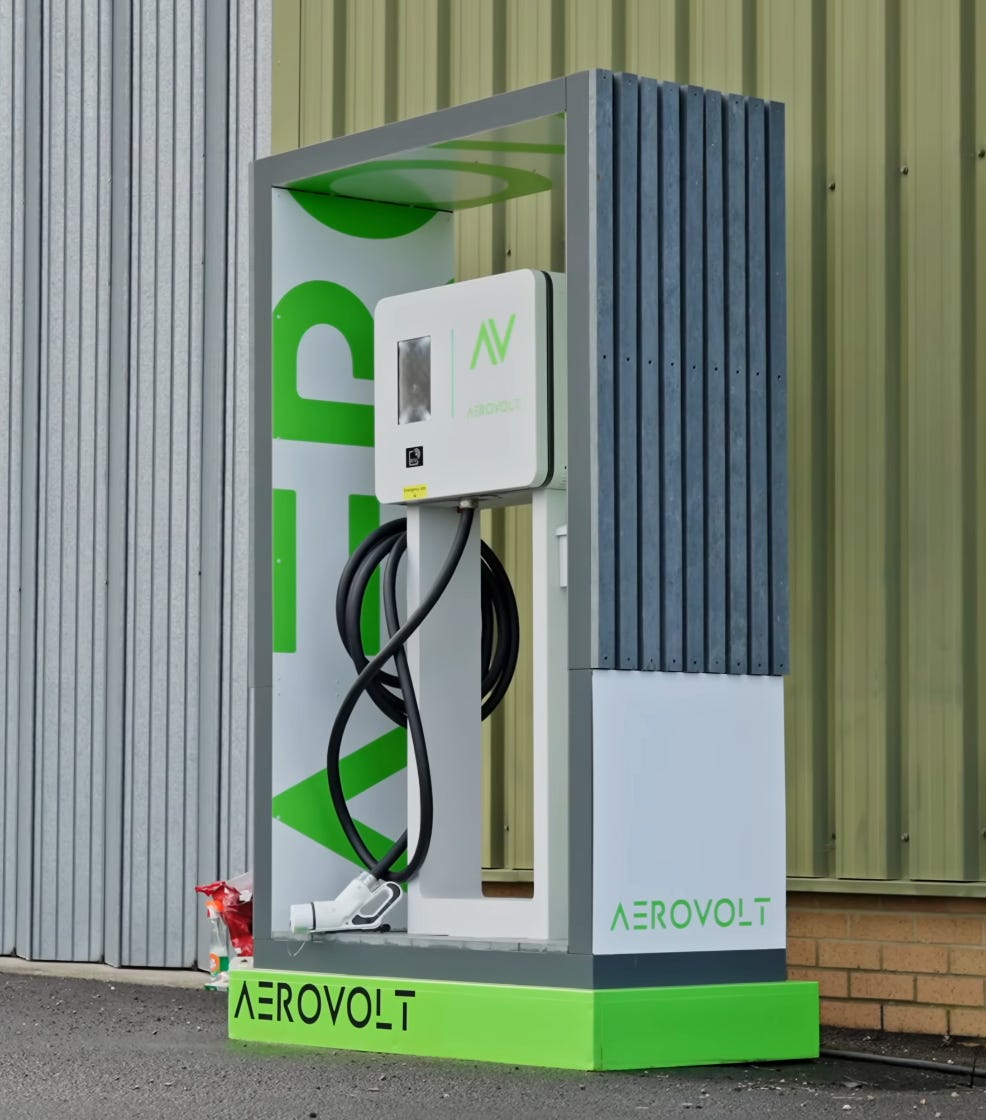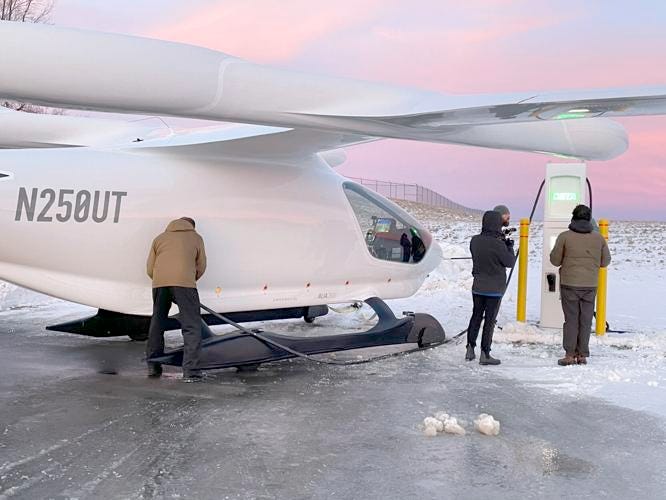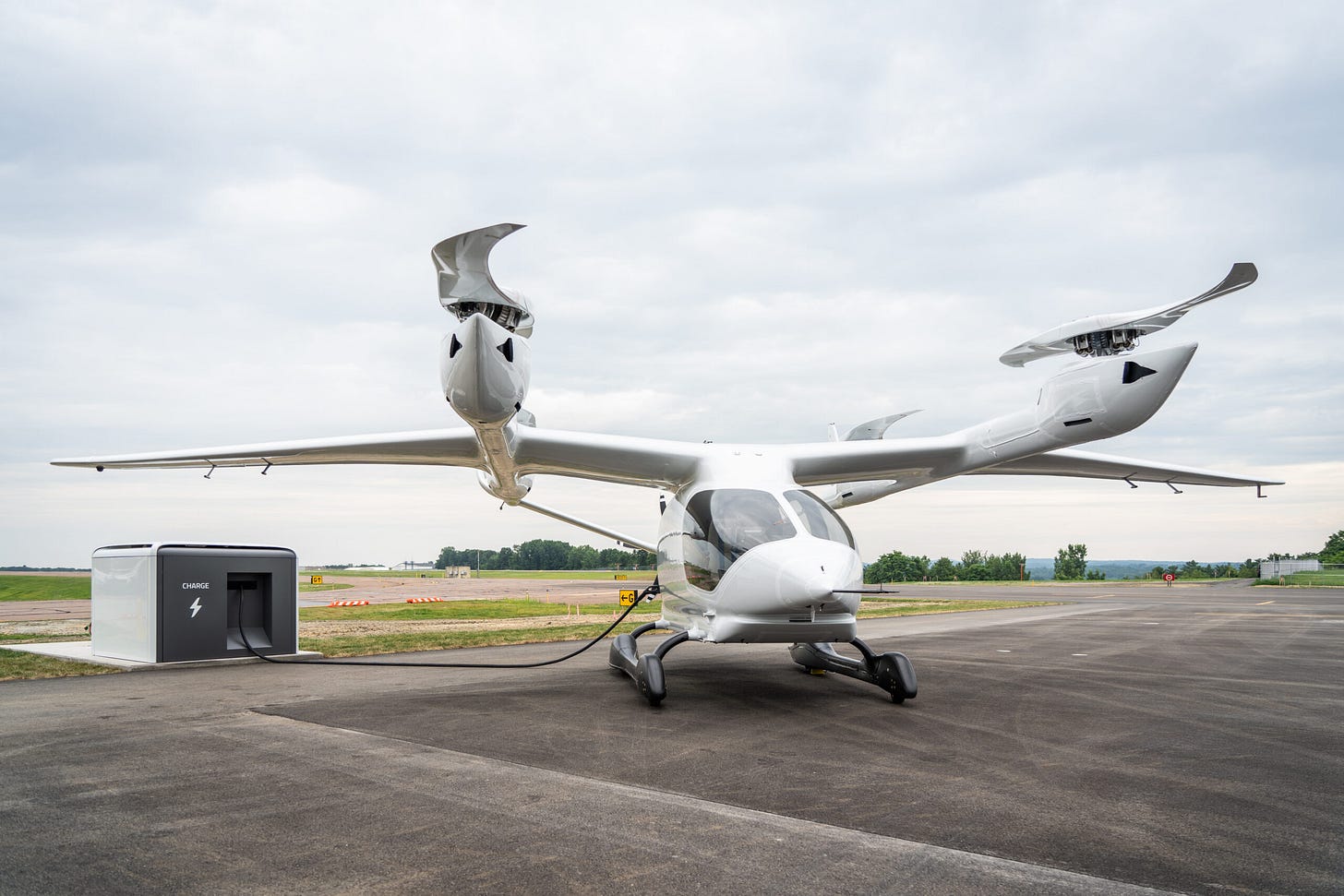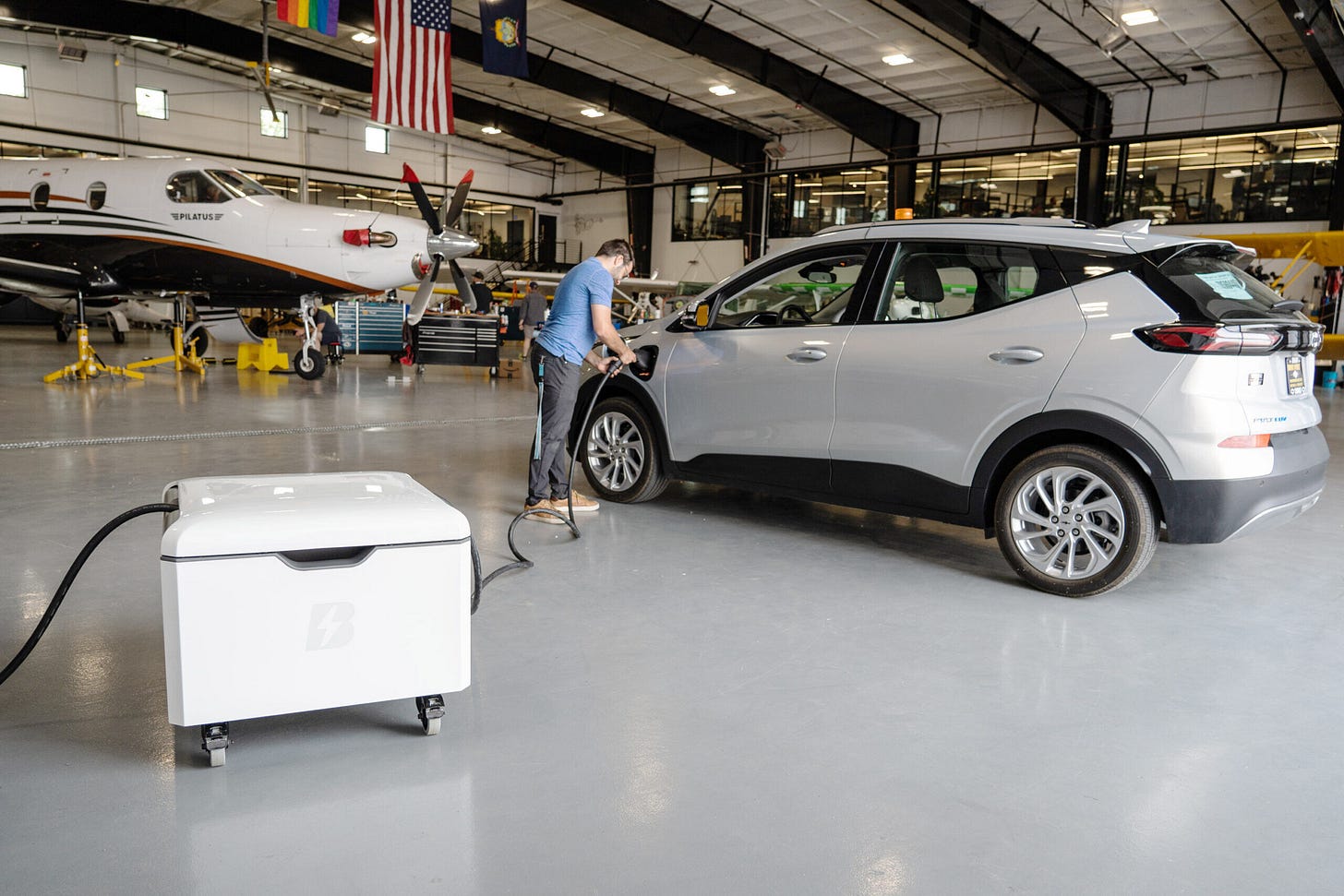Charging electric aircraft: GA edition
Charging Pipistrel Electro and H55 Bristell Energic aircraft
Flying on electrons is great in so many ways - powerful, quiet, and much less expensive to fly. It does introduce a new set of constraints though; range, and charging. While the final source for both of these should be your aircraft manual, we can talk a little bit today about how it works in a general sense.
TL;DR:
Pipistrel uses GB/T (though it must be one of a few dedicated Pipistrel GB/T chargers), which you can buy from Pipistrel
H55’s Bristell Energic uses CCS1 in US and Canada, and CCS2 in Europe to do DC Fast Charging only (no AC charging)
Charging Pipistrel Electro
I suspect that most buyers of Electros are purchasing a charger along with the aircraft - at least along with the first Electro they add to the fleet. So, most flight clubs, flight schools, and even private owners likely have one of the Pipistrel provided SkyCharge M10 (single phase) or M20 (three phase) chargers.
It appears to be common practice to have these “suitcase” sized, portable, heavy duty chargers like the M10 and M20 rolling around in a hanger, so that they can be pulled up to whichever aircraft needs charging.
There are also “fixed” chargers in the Pipistrel world - most commonly AeroVolt locations in the UK. Check out this great video that Fully Charged did on AeroVolt. We list the AeroVolt locations on skyzero.io, and we’re working on being able to show their status - are they online, offline, are they in use or available and so on. AeroVolt was also featured in the Hammond / May “Car vs Plane” video where they raced a Pipistrel Velis against a Porsche Taycan.
AeroVolt has 8 chargers up and running in the UK now, with agreements to do a lot more.
While we are aware of multiple efforts to install a sort of charging network in California, one in Los Angeles and one in Fresno California, its unclear that either are still operating today.
To get a sense of how an actual charging session works, The Electric Plane Guy on YouTube does a good job of explaining how to charge the Alpha Electro.
Lausanne Aeroclub in Switzerland hosts the manual for the Pipistrel SkyCharge to give you a better sense of the tech specs.
AeroVolt in the UK makes use of the GreenMotion SkyCharge. These are now supplied by Eaton, which purchased GreenMotion. The Fully Charged Show video above gives you a sense of what the “fixed” (not rolling) version looks like; AeroVolt appear to usually install them on the apron, off to the side where an aircraft can charge, as opposed to in a hangar.
Manuals for the Alpha and Velis Electro both state that only Pipistrel approved chargers can be used. The Alpha manual states that only “Pipistrel original equipment must be used”, and the Velis Electro manual uses similar language, but also lists Green Motion’s SkyCharge Solo 22, which AeroVolt use.
Installing Pipistrel SkyCharge Chargers
There are fewer references for installing the SkyCharge, but there are a few.
On its face, the M10 should be fairly simple, as its a single phase 110-250V charger one would expect it to be compatible with some “household” electriclal outlets - however, its unclear based on what I can see on the Internet.
The M20 is a three phase charger, and capable of higher speeds than the M10. While its likely a pretty standard install in EU and UK where three phase is common, its less common in the USA and Canada.
University of Waterloo’s Institute for Sustainable Aeronautics posted a through article about the SkyCharge M20 three phase install about what they had to go through to get the charger correctly wired in to the building.
H55’s BRM Aero Bristell Energic
The Bristell Energic is a newer player. Its battery, at 48 kWh, is a bit more than twice the size of the Electros. They’ve scaled up the charging proportionally, too, settling on DC Fast Charging, and specifically the CCS standard. This means in EU they use CCS2, and in North America they use CCS1.
This is a similar approach to Beta, and Archer. AeroVolt has also said that they intend to support CCS down the road. Of these three, Beta is by far the most serious, with a charging network of 44 CCS stations, most with two chargers, some with more. Though the majority are along the east coast and the southern USA, they do have one in Salinas California for Archer as well.
H55 has confirmed with SkyZero.io that the Bristell Energic can work with all standard CCS chargers as long as they are DC Fast Chargers, 50 KW or above. This is great for airports and charging network operators, as this means that they can work with the majority of automotive CCS chargers. Most EV chargers can dispense faster than 50 kW.
Procuring an airside CCS charger
I’d likely start with Beta if you’re looking for an expert partner.
Beta’s first wave of CCS chargers were made by BTC Power. While the software on them was custom (including a sort of drawing of the Alia on the screen), the unit itself would be super recognizable to the EV charging public, though the cables look a bit longer.
However, today they are deploying newer models that were built for aviation:
Lower to the ground to better fit under high wing aircraft
Long retractable cables
You could also contact AeroVolt to see what it might look like with them, though its not clear if they offer CCS charging yet, I believe this offering is still in the works.
If you really wanted to broaden the field, however, you could try working with an automotive specialist. As long as their licensed to do electrical work at your site, and understand their product, having them deploy an automotive 50kw or better CCS DC Fast Charger ought to work just fine. You might have them read this article first, and aim to see if they can find a model that’s lower to the ground with better cable management and a longer cable.
Beta also has a “mini cube” version that’s more in line with the Pipistrel SkyCharge M10 and M20, rollable, and meant more for operating in and around a hangar, not in a fixed situation.
Keep in mind, these could be doing dual duty - charging not only your aircraft, but also ground vehicles. All cars and trucks can now charge on CCS, in most cases directly, and even in the future as automotive shifts to Tesla’s “NACS” standard CCS vehicles will still work as long as you have the right adapters.




